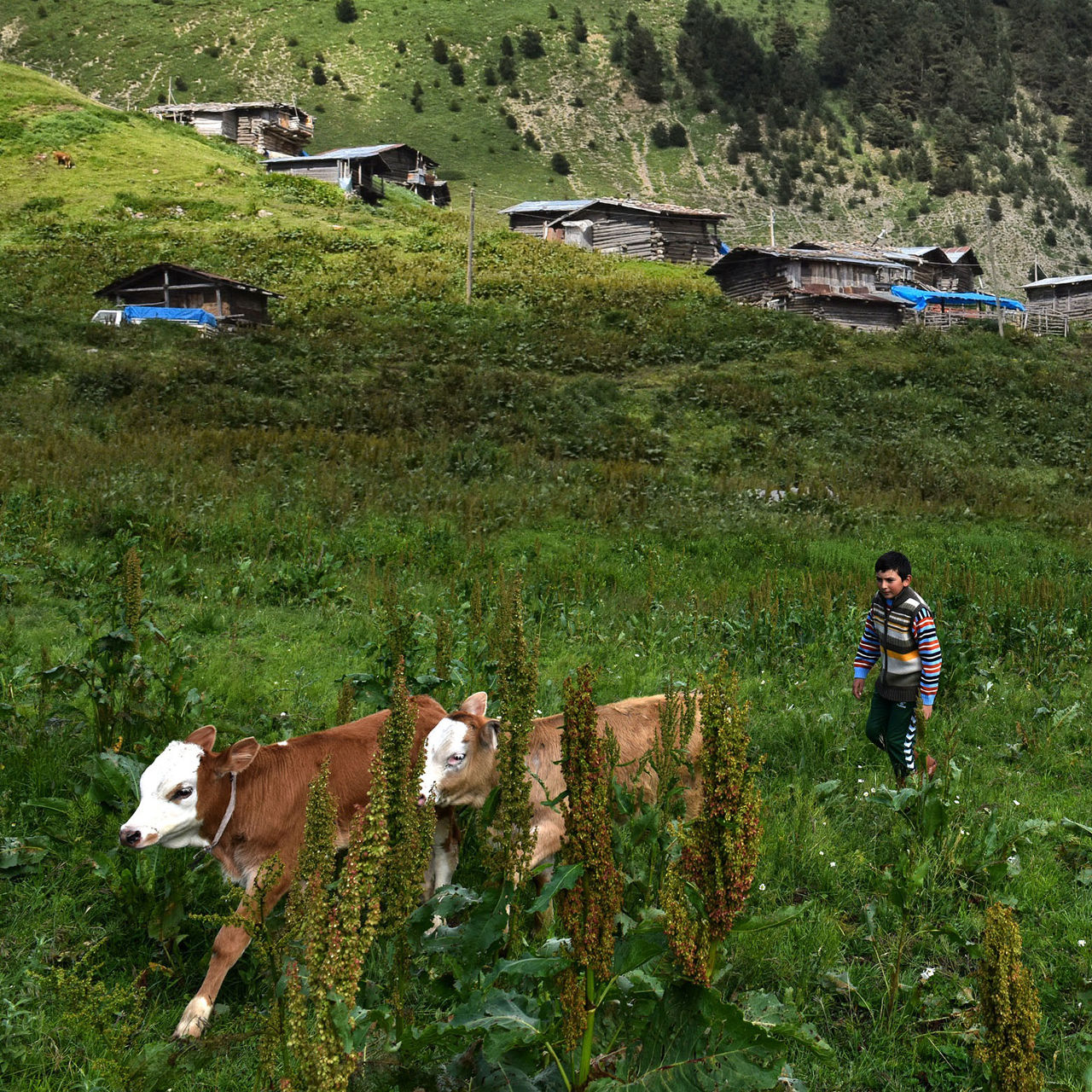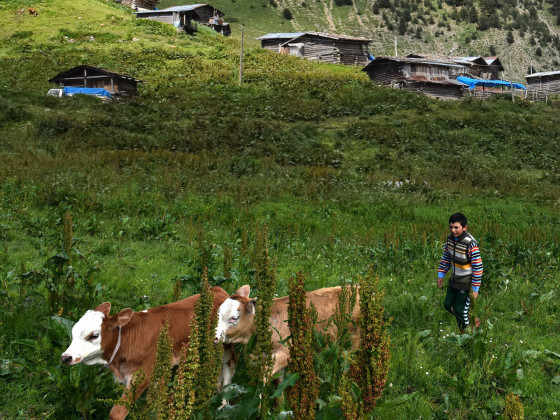TURKEY’S BLACK SEA REGION is a narrow strip running pretty much across the entire top of the country, bordered by water to the north and high mountains to the south. In many areas quite remote, the region is very different in both culture and geography from Istanbul and the Mediterranean coast. For example…
1. You’re not in kebab country anymore.
Forget what you think you know about Turkish food. The Black Sea region has its own cuisine inspired by the local bounty — leafy greens, corn, fresh dairy products, beans, wild mushrooms, and more. Try muhlama, a rich fondue-like blend of cornmeal, cheese, and butter that’s perfect for warming the belly on a cold night in the mountains; karalahana çorbası, a hearty kale-and-bean soup; or Laz böregi, a layered filo-dough pastry filled with thick custard.
2. Bigger isn’t better (at least not when it comes to fish).
The king of local seafood in the Black Sea is one of the littlest fishes of all: hamsi, or anchovy, caught in the late fall and winter and cherished all the way to Istanbul. The most common way to eat them is dusted with corn flour and pan-fried whole, as in the photo above, but hamsi-loving Black Sea chefs also cook the little fish into rice dishes, omelets, casseroles, and even cornbread.
3. And hamsi is so popular it inspired a dance move.
Seriously. The traditional horon, a fast-paced folk dance from the region, incorporates a frequent shimmying motion said to resemble the movement of the little silver fish as they swim in the sea or struggle in the fisherman’s net.
4. It’s pretty wild out here.
Wolves, and raptors, and bears, oh my — the Black Sea’s extensive forests provide rich habitat for a large variety of wildlife, birds, and plants, including endangered species. The region is home to Turkey’s only UNESCO-recognized biosphere reserve, Camili, in Artvin’s Maçahel Valley, as well as one of the country’s best trekking destinations, the rugged Kaçkar Mountains.
5. Where you really want to be is up in the mountains.

Photo: GÜLCAN ACAR
Sure, it’s called Turkey’s “Black Sea” region, but the coast isn’t the only or even the main attraction. Snowed in during the winter, the yayla, or highland meadows some 1,500 meters above sea level, burst to life in the spring with colorful wildflowers and green grass. Traditional rural life thrives here in the warm months, as villagers bring their livestock and beehives up to the yayla and stay through the summer in centuries-old wooden cottages while letting their cattle graze freely. These beautiful landscapes are perfect for a hike or picnic, too.
6. But there’s plenty of history and culture, too.
It’s not as well known as the Mesopotamian cultural heritage of Southeast Turkey, but the Black Sea region was also a serious melting pot back in the day. Greeks, Romans, Mongols, Armenians, Georgians, Genoese, and others all passed through, leaving behind distinctive churches, castles, tombs, and monasteries that can still be visited today. In Artvin, keep an eye out for performances by the Maçahel Polyphonic Choir, a group of elderly male singers keeping traditional Georgian folk songs alive.
7. Men don’t fight bulls here; the bulls fight each other.
There’s no matador-type figure in Black Sea bullfighting (boğa güreşi, or “bull wrestling”), a tradition in the Artvin area. Like camel wrestling along Turkey’s Aegean Coast, the unusual sport pits two large beasts against each other; the winning bull is the one that chases its opponent out of the ring first. Bull owners dote on their animals, reportedly spending many times the average year’s salary to keep them fit and well fed.
8. The local honey can pack a punch.
With so much rich flora in the area — there are more than 150 endemic plant species in the Kaçkars alone — it’s no surprise that Black Sea honey is some of Turkey’s best. But before you take a heaping spoonful, make sure it’s not deli bal. Bees that feed on a local type of rhododendron are known to produce this “crazy honey,” which can bring on dizziness, mild hallucinations, and other symptoms. A little dab’ll do ya.
9. Bird whispering and whistling are both traditional practices here.
Traditional falconers in Arhavi and other Black Sea towns are known for their ability to catch and quickly tame wild hawks, use them to hunt quail for a short season, and then release them to continue on with their migration. The hawks’ temporary “owners” take their birds everywhere with them, even to special cafes where they meet other falconers to swap stories and discuss training techniques.
Meanwhile, the aptly named hamlet of Kuşköy (“Bird Village”) in Giresun province is home to a rare tradition found in a scant few mountain communities around the globe: whistled language. Villagers make bird-like whistles to emulate the sound of Turkish words and sentences, creating a language ideal for communicating long distances from one hillside to another in the pre-cellphone days.
10. If you fly from Istanbul to Hopa, you’ll end up in Georgia.
And no, the pilot didn’t make a mistake. Flights to this far-northeastern Turkish city actually land in Batumi, 20 miles away and on the other side of the Georgian border. Hopa-bound passengers are shuttled on a bus back to Turkey, no visa for Georgia required.
11. The local people are ingenious, witty, and kind.

Photo courtesy of Turkey Ministry of Culture and Tourism
In a mountainous region divided by deep valleys, with many houses perched on steep hills, getting from here to there can be a pain, especially when you have a big load to carry. Some locals have gotten around (or rather, above) this problem by constructing simple zip-line-style conveyances to move people and goods on aerial platforms. You might see a version of this employed to ferry your suitcase to your room at a mountain hotel.
But apart from such practical contrivances, the people of the Black Sea region — themselves comprising a diverse mix of heritages — are welcoming and eager to show you exactly how their Turkey differs from the one you thought you were coming to visit.

